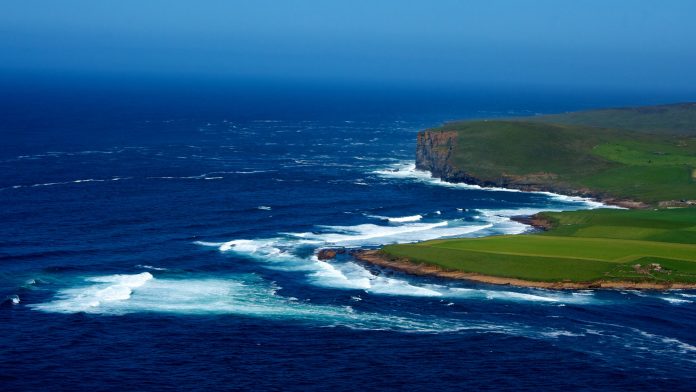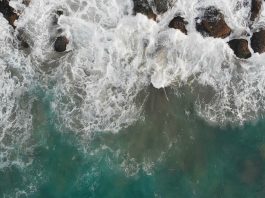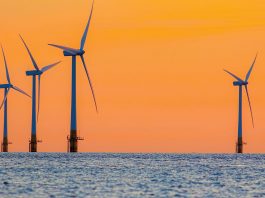Matthew Finn, Commercial Director of the European Marine Energy Centre (EMEC), discusses the role that marine energy can play in a decarbonised future and how his organisation can help that potential to be achieved.
The European Marine Energy Centre (EMEC) Ltd is the world’s first and leading facility for demonstrating and testing wave and tidal energy converters – technologies that generate electricity by harnessing the power of waves and tidal streams – in the sea. It was established to kick-start an ocean energy sector in the UK and boost economic development in the Highlands and Islands. Ocean energy is very much still at the heart of what EMEC does, however the organisation is now using its infrastructure, skills, and know-how to help the world decarbonise in other areas as well, and to demonstrate the clean energy system of the future.
EMEC’s Director, Matthew Finn, spoke to The Innovation Platform about the role that marine energies can play in the future and some of the challenges that still need to be overcome.
How would you describe the marine energy landscape in Europe in the context of the wider renewables environment?
We have seen good commitment to marine energy at the European level, not least with the Green Deal recently being signed which, of course, is the EU’s flagship initiative in this area. Ocean Energy Europe, an organisation we work closely with, have established the targets for wave and tide energy generation for 2020 and 2050. The high growth target for 2030 is 2.9 gigawatts, which is significant for wave and tide energy levels.
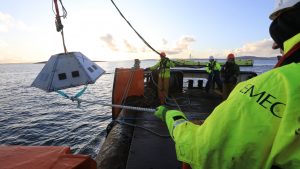
These are certainly the most ambitious targets that I have seen at the European level, and it should be noted that there will be some countries – namely those with a west coast, as they have great wave energy potential – that will be key to achieving these ambitions. They include the UK and Ireland, of course, as well as, for instance, Norway, Spain, and Portugal. And this will be in addition to the key locations for the generation of tidal energy such as Scotland, England, and France.
The resource has always and will always be there; and we have reached the stage where tidal energy technologies are getting close to commercialisation, but public support mechanism are very much needed to turn ambition into success.
Should more attention be paid to this area in terms of policy (and funding) support to develop new and emerging technologies – in the same way as we have seen, for instance, with solar and, to some extent, wind?
This is extremely important for the ocean energy sector to progress; getting relevant and enduring market support mechanisms and continued funding for research and development is crucial.
Take wind energy as an example: when the CFD auctions and other market support mechanisms were put into place, that allowed investors to get behind the technology, thereby enabling that same technology to scale up, and with increased scale comes decreased costs. That has been incredibly effective. The challenge that exists now in both the UK and elsewhere, however, is to achieve the same market balancing mechanism that we have seen for wind and solar for wave and tide. If we are unable to achieve that, it will be almost impossible for wave and tied to compete, as the other sectors have already been able to cut their costs.
This is therefore a significant focus for both EMEC and our developer clients. Getting ringfenced market subsidy for wave and tidal energy will get the attention of private sector investors, which means that more effort can be put into improve the technology.
What are the main benefits of marine energy – and perhaps the biggest hurdles to a wider roll out and utilisation of relevant technologies?
There are a range of different technologies maturing at different paces. The real prize is to develop a robust energy mix that utilises the various forms of renewable energy alongside storage.
Solar energy, of course, can only be generated when the sun is shining, and wind energy is generated when the wind is blowing. Wave energy is essentially old wind: storm blows through and they leave a swell. So wind energy is generated first, then afterwards the energy is much denser in the sea, and so there is a nice synergy between the two forms in terms of trying to fill the grid with renewables. For the most, the sea is never really calm; it is much more consistent, whereas the wind is much more intermittent, and that is an important part of how it fits in the energy system.
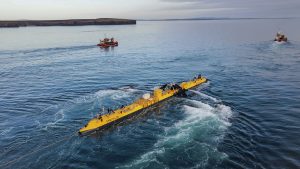
Regarding tidal energy, this is even more pronounced. The tide goes one way for six hours and then turns around and goes the other way. That means that we see four pulses of energy a day coming from this source. Something that is particularly exciting about tidal energy is that you can pick any point in the future and know exactly what the tides will be doing. In essence, tides give you predictable, renewable energy, which is great in terms of both how you run the grid and how the world operates.
From an economic perspective, the ocean energy activity that we have had at our test site acts as a great case study of the impact this can have on a small community in terms inward investment, supply chain development, jobs, and infrastructure improvements. EMEC is based in Orkney, a small island off the north of Scotland, so it is great to be able to create economic growth and activity here, which is always challenging in such remote rural locations. Energy is the biggest market in the world, and if you can find a way to extract energy and create it yourself then it is possible to build resilience into these communities. That allows knowledge and expertise to develop, and then that energy can also start to be exported.
The first-generation technologies such as wind and solar have already been created, but we need other energy resources to be harnessed as well to create a healthy energy mix.
At the European level, most of the supply chain from wave and tide is here. When you look to the development of wind, it is clear that we have not been able to capture the benefit as much as would have been liked, and so there are important lessons to be learned from that when we start to explore how we can scale up wave and tide.
What role does EMEC play here? What activities are you involved in that you are particularly excited about?
Technology Readiness levels (TRL) range from TRL1, essentially a concept idea, to TRL9, which is an approved product available on the market. Doing anything in the sea is expensive and risky, and we found the most expensive part of the journey towards TRL9 to be around TRL6 and TRL7, which involve building full scale prototypes, which is a significant challenge. The ‘valley of death’, into which many new technologies fall, is also a challenge to overcome to become a successful commercial company.
One of the main reasons that EMEC was established was to de-risk that. We have invested £36m in our infrastructure, including cables on the seabed and substations, as well as the consents required to test in the sea. This means that when new technologies reach TRL6 or TRL7, we should be able to help them reduce the time, cost, and risk. We provide assistance in a variety of different ways in addition to what we can achieve at the site itself.
EMEC is something of a shop window for the industry in that most of the technologies available around the world have either come through EMEC or we have worked with them in some way. We are thus in an incredibly privileged position to be able to see all of the different technologies as they are developed.
More technologies will be emerging this year. For wave energy, a Wave Energy Scotland programme is funding the deployment of new technology from AWS Ocean Energy and Mocean Energy. In addition, Orbital’s next generation tidal turbine O2 has just arrived in Orkney, and Spanish developer Magallanes has just reinstalled its prototype at our tidal energy test site. These are large, multi-million pound technology-focused projects.
We are also currently installing a flow-cell battery with 1.8 megawatt hours, which should mean that we are able to smooth the input from tidal energy. We are also turning the generated energy into hydrogen, which is one element of a whole different part of what we do at EMEC in terms of trying to decarbonise the energy system in Orkney, which is incredibly exciting.
What impact has/will Brexit have on your activities and perhaps marine energy technology activities more generally? How can any issues be solved?
Much of what happens in the sector during the early stages is very collaborative, and we have seen that continue despite Brexit. Furthermore, the UK is still able to participate in the EU’s Horizon Europe Framework Programme, and as we are UK-based that is important for us as there are numerous exciting calls coming up for wave and tidal within Horizon Europe.
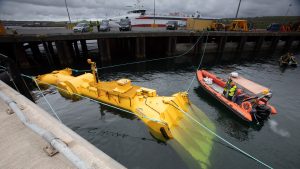
However, the UK has lost access to some of the other funding programmes that support certain large projects in wave and tide. The UK will replace those, but it might take some time for that to happen, and we are waiting to see just how that will happen.
The situation we have found ourselves in is not optimal, but we will nevertheless continue to strive to make the best of what we have got.
What are your hopes for both the marine energy sector and EMEC moving forwards?
During EMEC’s early stages, the question was whether we could make electricity from waves and the tide. We have since been able to develop the technologies to achieve that goal. The next challenge going forward is to make these technologies as reliable and as cost effective as possible. There is some great work being done by the Offshore Renewable Energy (ORE) Catapult which is looking at the cost reduction pathway for tidal, and both EMEC and ORE Catapult are involved in a project called ‘TIGER’, which is focusing on this.
The big thrust is now focused on getting wave and tide to a level where it is investor-ready and can be scaled up, and we are confident that we can help to make that happen.
Mathew Finn
Commercial Director
European Marine Energy Centre
+44 (0)1856 852060
info@emec.org.uk
www.emec.org.uk
Please note, this article will also appear in the sixth edition of our quarterly publication.

